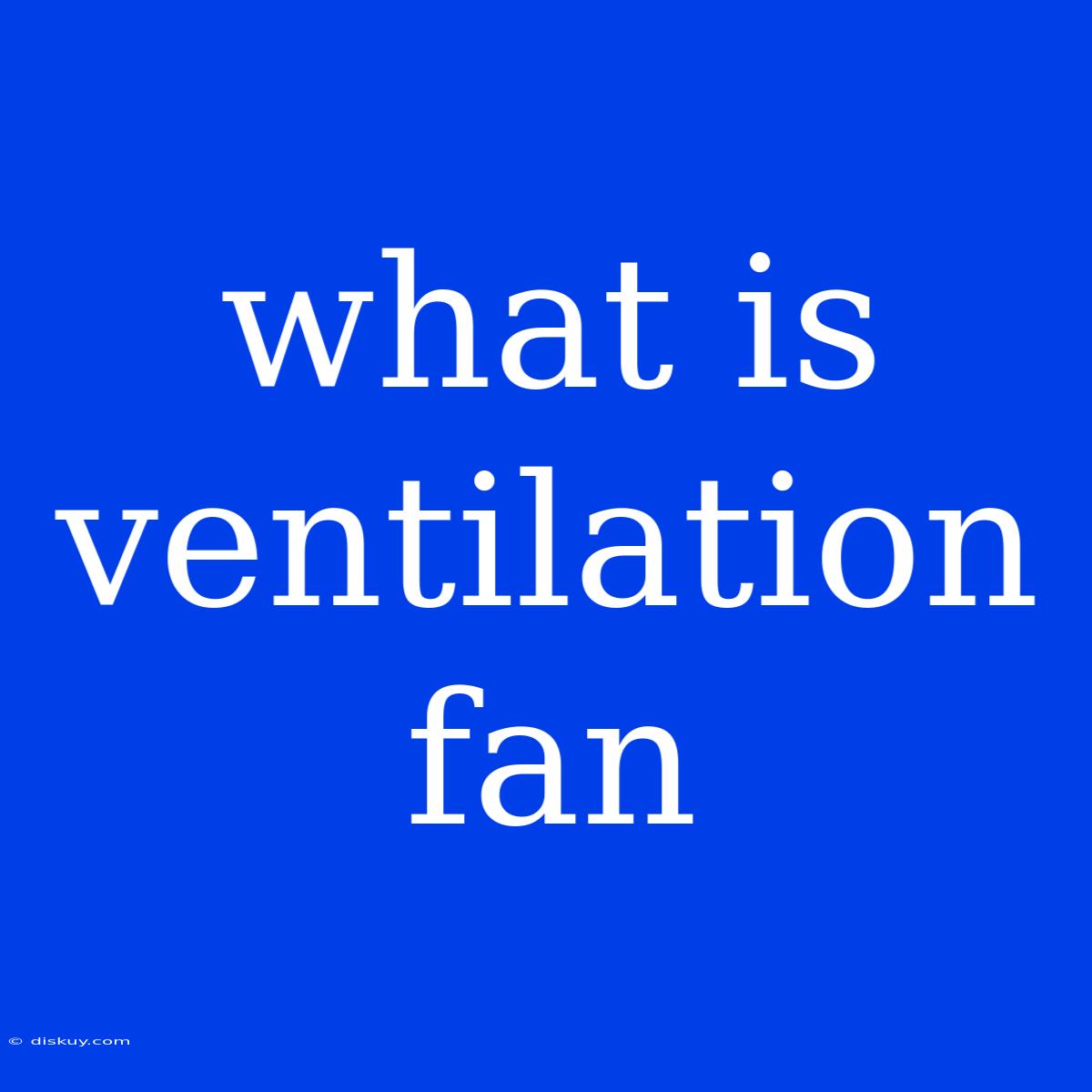What is a Ventilation Fan: Unveiling the Secrets of Indoor Air Quality
What is a ventilation fan? A ventilation fan is a device designed to improve indoor air quality by removing stale air and replacing it with fresh air. They are essential for maintaining a healthy and comfortable living environment.
Editor Note: This article delves into the world of ventilation fans, exploring their types, functions, and benefits for your home.
Why is ventilation so important? Airborne pollutants, allergens, and moisture can accumulate in indoor spaces, posing health risks. Ventilation fans help to remove these contaminants, reducing the risk of respiratory problems, allergies, and mold growth.
Analysis: This comprehensive guide analyzes the essential aspects of ventilation fans, including their types, applications, and installation considerations. By understanding these factors, you can choose the right ventilation fan for your specific needs.
Key Takeaways:
| Feature | Details |
|---|---|
| Types | Exhaust, Supply, Balanced, Heat Recovery Ventilation (HRV) |
| Applications | Kitchens, Bathrooms, Basements, Crawl Spaces, Attics, Whole-House Ventilation |
| Benefits | Improved Indoor Air Quality, Reduced Moisture, Reduced Allergen Levels, Prevention of Mold Growth, Enhanced Comfort, Energy Savings |
| Considerations | Fan Size, CFM (Cubic Feet per Minute), Noise Level, Energy Efficiency, Installation Location, Ventilation Requirements, Local Building Codes |
Ventilation Fan Types
Exhaust Fans: These fans remove stale air from a specific area. They are commonly used in kitchens, bathrooms, and laundry rooms.
Supply Fans: These fans bring fresh air into a room or house. They are often used in conjunction with exhaust fans to create balanced ventilation.
Balanced Fans: Balanced fans use both exhaust and supply fans to maintain a constant air flow in and out of a building. They offer optimal air circulation.
Heat Recovery Ventilation (HRV): HRV systems recover heat from the exhaust air to warm incoming fresh air, increasing energy efficiency. They are often used in colder climates.
Ventilation Fan Applications
Kitchens: Exhaust fans remove cooking odors, grease, and steam, preventing them from accumulating.
Bathrooms: Exhaust fans remove moisture and odors, reducing the risk of mold and mildew growth.
Basements: Ventilation fans help to prevent moisture buildup in basements, mitigating the risk of mold and mildew growth.
Crawl Spaces: Ventilation fans improve air circulation, reducing moisture levels and improving building stability.
Attics: Ventilation fans remove hot air from attics, reducing roof temperatures and extending the lifespan of the roof.
Whole-House Ventilation: Whole-house ventilation systems provide fresh air throughout a building, creating a healthier and more comfortable living environment.
Conclusion
Ventilation fans play a crucial role in maintaining indoor air quality and improving overall health and comfort. Choosing the right type of fan, considering factors such as application, size, and energy efficiency, ensures optimal performance and long-term benefits. By prioritizing ventilation, you can create a healthier and more comfortable living space for yourself and your family.

